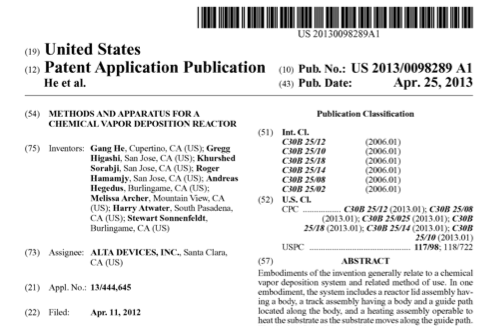solar efficiency and the “one-timer”
You hear about a hockey “one-timer” quite often during the playoffs. You do not hear about the technology “one-timer” near as much. A technology one-timer might be best described as an article that takes a snapshot of a technology, presenting a single idea or development, and does not return. The problem is that without knowledge […]
You hear about a hockey “one-timer” quite often during the playoffs. You do not hear about the technology “one-timer” near as much. A technology one-timer might be best described as an article that takes a snapshot of a technology, presenting a single idea or development, and does not return. The problem is that without knowledge of the back story any sole piece of information tends to have limited utility. What brings all this to the surface? It was the article “Ultra-Efficient Solar Power”. Yes it did cover an interesting idea, but the thread really opens up with a bit of digging. It is time to dive into the deep end.
The above article discusses a bit of research by Harry Atwater of Caltech that is generally directed to improving the efficiency of solar energy. As indicated in the article current Si-based cells only capture a fraction of the possible solar energy because they are only able to convert a fraction of the wavelengths to electricity. In this work of Atwater light is split into components of particular wavelengths, which are then directed to a solar cell appropriate for the particular wavelength. A different approach that is currently in use in CPV systems implements a single “multi-junction” semiconductor where these junctions are “tuned” to different wavelengths. Right away one can appreciate there are two areas of development; one for the manipulation of light and one for the 6-8 semiconductor (PV cells) that are “tuned” to a particular wavelength of light.
Now, the name Atwater rang a bell, as a founder of Alta Devices. In fact he is also listed as an inventor on eleven patent applications assigned to Alta Devices. A portion of the face page of the most recent, US20130098289 i.e. “METHODS AND APPARATUS FOR A CHEMICAL VAPOR DEPOSITION REACTOR”, is presented below. Alta is itself pursuing higher efficient solar cells targeted at portable applications. In particular they are working on GaAs and related material systems. Digging more one finds a March 4, 2013 Press Release announcing a record efficiency for an dual junction solar cell. The last turn in this journey is to Spectrolab, which has long been working in multi-junction solar cells. Again turning to the Press Releases one finds an April 9, 2013 Release claiming a new efficiency record for a multi-junction solar cell.
Thus, at the end of the day the original technology one-timer opened up an interesting landscape of developments in solar cell efficiency. Somewhat coincidentally the semiconductor based efficiency improvements that came to light with a bit of digging may be those used as the semiconductors in the system of the original article.



